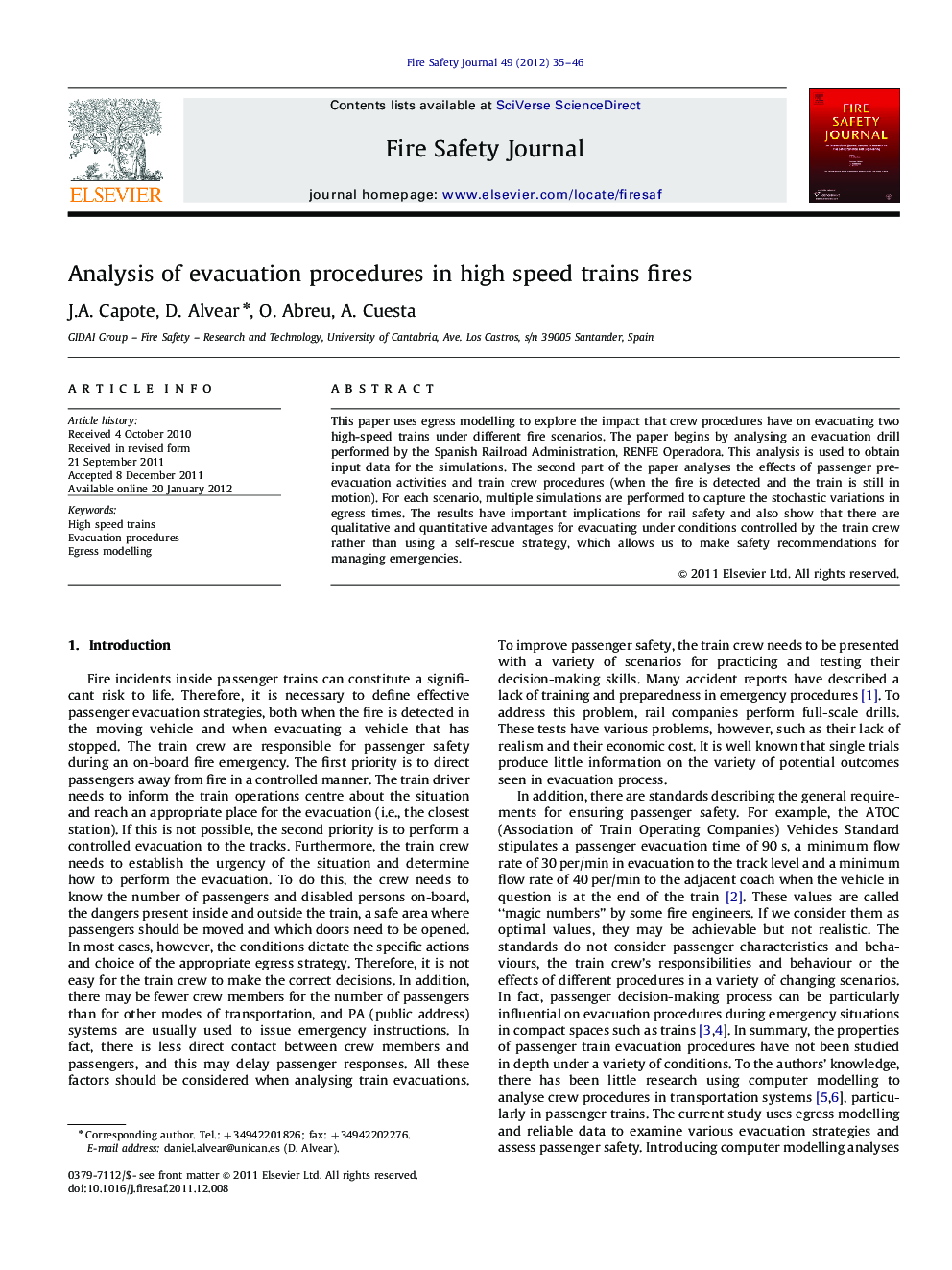| Article ID | Journal | Published Year | Pages | File Type |
|---|---|---|---|---|
| 270098 | Fire Safety Journal | 2012 | 12 Pages |
This paper uses egress modelling to explore the impact that crew procedures have on evacuating two high-speed trains under different fire scenarios. The paper begins by analysing an evacuation drill performed by the Spanish Railroad Administration, RENFE Operadora. This analysis is used to obtain input data for the simulations. The second part of the paper analyses the effects of passenger pre-evacuation activities and train crew procedures (when the fire is detected and the train is still in motion). For each scenario, multiple simulations are performed to capture the stochastic variations in egress times. The results have important implications for rail safety and also show that there are qualitative and quantitative advantages for evacuating under conditions controlled by the train crew rather than using a self-rescue strategy, which allows us to make safety recommendations for managing emergencies.
► We use egress modelling to define effective evacuation strategies in train fires. ► ATOC values may be achievable but not realistic. ► Evacuations to platform require an adequate distribution of passengers to each exit. ►Evacuations to track level require priority to passengers closer to the fire. ► Egress modelling based on reliable data can improve rail safety.
